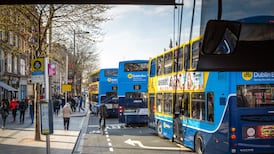It's a busy week for the airlines. First-quarter results are due from Ryanair today, with Aer Lingus releasing its first-half financial figures on Wednesday. Thursday is the deadline for Aer Lingus shareholders to accept IAG's offer.
Ryanair has already indicated it will be accepting the IAG offer, and Etihad, which owns almost 5 per cent of Aer Lingus, has also indicated it will sell to IAG.
Once IAG reaches a 90 per cent acceptance rate, it has the right to acquire all remaining shares in the Irish airline.
Goodbody has forecast that Ryanair will post net profit after tax of €248 million for the quarter, up 26 per cent from €197 million last year. EPS are expected to rise 28 per cent year-on-year to 18.19 cent, given the impact of the recent €400 million buy-back programme.
“Comments post the June traffic stats suggested that Q1 yields were weaker than expected in April. As such, we took €12 million off our original Q1 forecast of €260 million, although €248 million net profit after tax still represents growth of 26 per cent year- on-year,” Goodbody said.
Performance
Davy meanwhile is forecasting Ryanair’s first-quarter net profit to increase by more than 27 per cent to €250.6 million
Aer Lingus last posted results in April, announcing revenues of €280 million for the first quarter of 2015, a 7.9 per cent increase on 2014’s first quarter figure of €259.4 million.
The improved performance was attributed to long-haul activity, demand-led short-haul capacity decisions and a year-on-year growth in retail, cargo and other revenue generators.
The airline said capacity on long-haul flights increased by 21.6 per cent and was converted into a 23.3 per cent rise in passenger numbers. This marked a 20.6 per cent improvement in yield per seat.








